6 Signs Your Chevrolet May Need New Headlights
Headlights are not just about seeing the road ahead, they also make you visible to others. If you’re wondering whether you need to head to the Chevrolet dealer for new headlights, here are some clear signs to look out for.
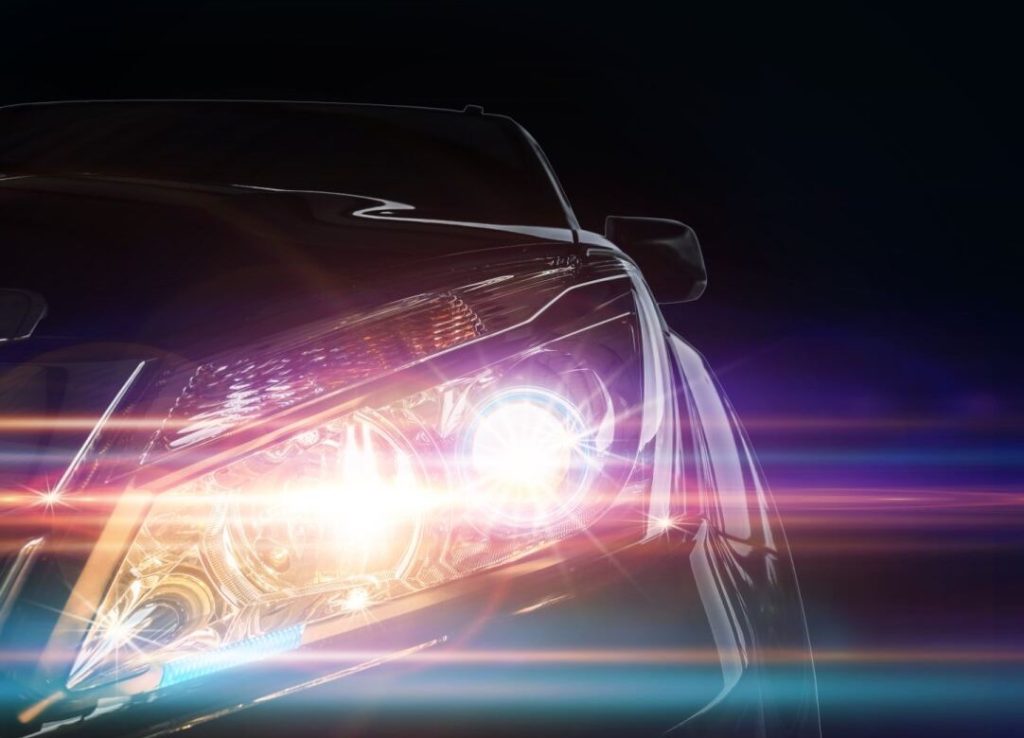
1. Dimming Headlights
One of the first signs that your Chevy might need fresh headlights is a noticeable decrease in brightness. Headlights naturally dim over time as they are used, but at some point, those bulbs just aren’t doing their job anymore. If you find the road ahead isn’t as well-lit as it used to be, it’s probably time to check your headlights.
Read the rest of this entry »How to Properly Store Your Car for Winter
Discover effective tips on storing your car for winter. Learn to protect your vehicle with our guide, ensuring a trouble-free start come springtime!
Key Takeaways
- Understand the importance of proper preparation and storage of your car for winter.
- Learn critical steps like cleaning, changing oil, protecting the battery, and tire care.
- Find out the right way to use a car cover to store your car for winter.
- Tips to ensure your vehicle remains in optimal condition when not in use.
- Learn about the role of car insurance during winter storage.
Whether it’s a vintage convertible you’re saving for sunny days or your daily runner you’re swapping for a winter beater, knowing how to store your car properly for winter is crucial.
Adequate preparation can prevent expensive repair bills and ensure your vehicle starts up trouble-free when the weather turns warm.
And remember, at Chevrolet of Ottawa, we’re here to help you prepare your car for winter, and when spring comes, make it road-ready again!
Proper Cleaning
Before preparing your car for winter, it’s imperative to clean it thoroughly. Washing your vehicle, both inside and out, helps eliminate any corrosive substances attached to your car’s body or undercarriage.
Consider a professional detailing service to ensure a meticulous cleaning, including the engine bay. Once cleaned, apply a generous layer of wax to provide additional protection against possible rusting and corrosion during winter storage.
Oil Change and Fluid Check
Changing the oil before putting your car away for winter is crucial. Used oil has contaminants that could harm your engine over time. Fresh oil will ensure your engine’s internals remain well-lubricated and corrosion-free.
Also, consider topping up other fluids, such as coolant and brake fluid, and ensure your fuel tank is full to prevent condensation build-up.
Battery Protection
Car batteries don’t particularly enjoy the cold. If you’re storing your car in an unheated area, consider removing the battery and keeping it in a warmer place.
Attach it to a trickle charger to keep the battery healthy and prevent discharge. If you can’t remove the battery, disconnect the cables to avoid draining.
Tire Care
Flat spots can develop on the tires when your car is stationary for an extended period. To avoid this, inflate your tires to the maximum recommended pressure.
Some car owners also opt for storage on jack stands to offload the vehicle’s weight from the tires altogether.
Choosing the Right Cover and Storage
When storing your car for winter, it’s vital to keep it in a dry and preferably climate-controlled location. If that’s not possible, invest in a high-quality car cover designed for outdoor use.
The cover should be breathable to prevent moisture build-up and secure enough not to blow off in high winds.
The Role of Car Insurance
You might be tempted to cancel your insurance policy while your car is stored away for winter, but this could be risky. You must pay for the losses if your car gets damaged or stolen. Instead, consider adjusting your policy.
Many insurance companies offer comprehensive only policies for cars that aren’t being driven, providing coverage for theft, fire, and other damage.
Maintenance During Storage
Even in storage, your car still needs some attention. Start it up every two weeks, let it run for 15-20 minutes to reach operating temperature, and briefly drive it around. This helps circulate the oil, keeps the battery charged, and prevents various seals and gaskets from drying out.
Final Checks Before Storage
Before parking your car for winter, double-check everything. Ensure all lights are switched off to avoid battery drain, apply a thick layer of wax for paint protection, and lubricate the door seals to prevent them from sticking.
Leave the handbrake off to prevent the brake pads from sticking to the discs or drums.
Instead, use wheel chocks to prevent the car from moving. Also, plug the exhaust and air intake with steel wool to keep out critters.
Making a checklist can be helpful to ensure you’ve done everything you need to keep your car safe and clean for winter.
Rodent Protection
One often overlooked issue when storing your car for winter is the threat of rodents. Cars provide the perfect shelter for these critters, and they can wreak havoc by chewing through wires, hoses, and other components.
Consider using rodent deterrents like peppermint oil or commercial repellent sprays to prevent this.
Also, use steel wool or specialty car storage bags to seal off any entry points, including the exhaust and air intake.
Interior Maintenance
Protecting your car’s exterior and mechanical parts is vital, but don’t neglect the interior. Clean the inside thoroughly, removing any food crumbs or garbage that could attract pests.
Apply a conditioner to leather surfaces to prevent cracking, and for cloth seats, use a fabric protector.
To keep your car smelling fresh, consider using an odor absorber or desiccant bag to control moisture levels and prevent mold or mildew.
Preserving Convertible Tops
If you’re storing a convertible, there are some extra steps to ensure your top stays in good shape through the winter.
Clean and dry the top thoroughly, then apply a protective treatment explicitly designed for the material, whether fabric or vinyl.
Keep the top up to maintain its shape and prevent creasing when storing.
Additional Security Measures
While your car is out of sight during winter, it shouldn’t be out of mind. Implementing additional security measures can provide extra peace of mind. If your vehicle is stored in a garage, ensure it has a robust lock system.
Consider using a steering wheel lock for added protection. For outdoor storage, a high-quality weatherproof car cover with lockable features can deter potential thieves.
Conclusion
Preparing your car for winter storage might seem like a lot of work, but the effort is worth it to keep your vehicle in optimal condition. Remember, a little time invested now could save you significant time and money down the road.
Once you’ve followed these steps, you can rest easy knowing your car is well-protected against the ravages of winter.
And when it’s time to bring your car out of hibernation, Chevrolet of Ottawa is ready to help you get back on the road with the best car service your vehicle deserves. We’re here to ensure your post-storage transition is as smooth as possible – visit our store today!
*Image From Pixabay
Making sure that the tires on your Chevrolet wear evenly is the primary goal of getting a regular tire rotation. Uneven tread can cause various problems, from high gas mileage and vibrations to reducing the lifespan of your tires. By visiting your Chevrolet dealer for regular rotations, you can ensure your tires wear down evenly and last longer.
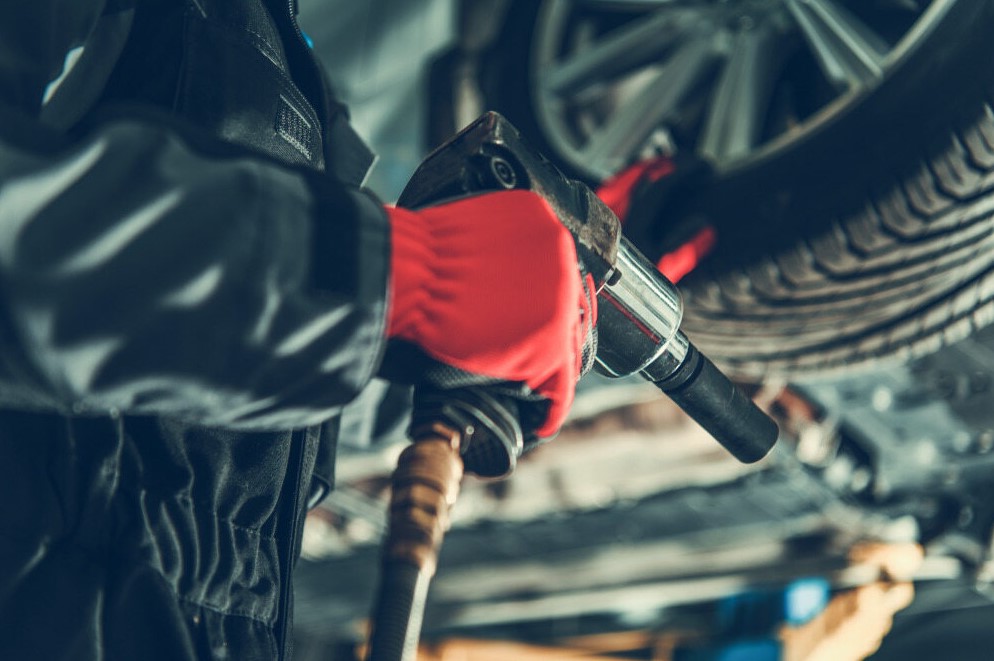
1. Prolong Tire Life
Getting your tires rotated regularly is essential to ensure that your four tires wear down evenly and last longer. Switching your car’s front and rear tires is a great way to ensure they wear evenly. Next time you take your vehicle for an oil change, ask your Chevy technician to swap your tires to get the most out of each tire.
Read the rest of this entry »If you’ve noticed any issues with your Chevrolet engine lately, visit your Chevrolet dealer to get the problems addressed quickly. Prompt repairs can save you money and prevent further damage down the line. Let’s look at the common engine problems you should fix at the local dealership.
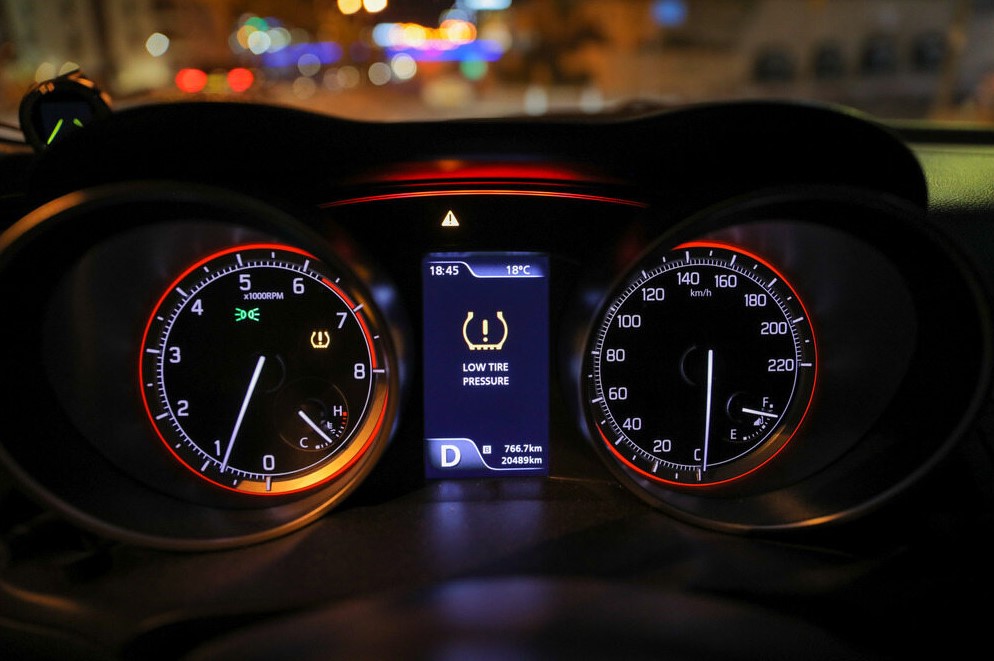
1. Check Engine Light Comes On
If the check engine light comes on, it’s trying to tell you that something is wrong with your engine. This warning can indicate a number of issues, such as:
- Oxygen sensor problems
- Faulty mass airflow sensor
- Faulty spark plugs or ignition coil
- Bad catalytic converter
- Problems with ignition timing
- Defective EVAP emissions system
With so many complex components involved in running your engine, it’s difficult for you to pinpoint the exact problem without professional help. Chevrolet technicians have engine diagnostic equipment that can isolate the exact reason why the check engine light came on.
Read the rest of this entry »Your car is an essential part of your everyday life, but it also needs special care during the cold winter months. Here are some essential tips to prepare your car for the upcoming winter season.

As the days grow shorter and the temperature drops, it’s a clear sign that winter is on its way. While many people think about bundling up in warm clothing and preparing their homes for the colder months, it’s equally important to get your car ready for winter. Cold weather and adverse road conditions can pose challenges for your vehicle, but with the right preparations, you can ensure that your car stays in top shape throughout the season. In this comprehensive guide, we’ll explore essential tips for getting your car winter-ready.
1. Tires: Your Winter Foundation
Your car’s tires are its point of contact with the road, making them a critical aspect of winter readiness. Here’s what you need to know about winter tires and tire maintenance:
a. Winter Tires vs. All-Season Tires:
– Consider switching to winter tires if you live in an area with severe winters. These tires are specifically designed to handle cold temperatures, snow, and ice. They provide better traction and control in winter conditions compared to all-season tires.
b. Tire Pressure:
– Check your tire pressure regularly, as it tends to drop in colder weather. Under-inflated tires can affect your car’s handling and fuel efficiency, so keep them properly inflated according to your vehicle’s specifications.
c. Tread Depth:
– Inspect your tire tread depth. The general recommendation is to have at least 1/8 inch of tread for safe winter driving. If your tires are worn down, it’s time to replace them.
2. Battery Health: Keep the Power Flowing
Cold weather can take a toll on your car’s battery. To avoid the inconvenience of a dead battery during the winter months, take the following steps:
a. Battery Inspection:
– Have your battery inspected to ensure it’s in good working condition. A professional can determine its health and remaining lifespan. Replace it if it’s old or weak.
b. Battery Terminals:
– Clean the battery terminals to prevent corrosion, which can impede the flow of electricity.
3. Engine Performance: Maintaining a Smooth Operation
Your vehicle’s engine needs extra care during the winter to ensure reliable performance. Pay attention to these aspects of engine maintenance:
a. Oil Change:
– Consider switching to winter-grade oil that flows more easily in cold temperatures. This type of oil provides better engine protection and lubrication during startup.
b. Cooling System:
– Check your engine’s cooling system, including the antifreeze. Make sure it can withstand sub-zero temperatures without freezing. The correct mixture of coolant and water is essential for winter protection.
c. Block Heater:
– If you live in an extremely cold climate, think about installing a block heater. This device warms the engine, making it easier to start in frigid weather.
4. Visibility: Clearing the Way
Winter often means reduced visibility due to snow and sleet. Ensure you can see and be seen on the road with these measures:
a. Windshield Wipers:
– Replace your regular windshield wipers with winter wiper blades designed to prevent ice buildup. Keep the windshield washer fluid reservoir filled with winter-grade washer fluid.
b. Snow and Ice Removal:
– Before driving, clear snow and ice from your entire vehicle, not just the windshield. This includes your windows, lights, and mirrors. Neglecting this step can result in impaired visibility and, in some regions, fines.
5. Emergency Kit: Be Prepared
Winter driving can be unpredictable, and it’s essential to be prepared for emergencies. Keep an emergency kit in your car that includes items like a flashlight, blankets, non-perishable snacks, and a first-aid kit. Being prepared can make a significant difference if you ever find yourself stranded in cold weather.
6. Driving Tips: Navigating Winter Roads Safely
Once your vehicle is winter-ready, it’s crucial to adopt safe driving practices. Here are some essential tips for navigating winter roads:
a. Reduce Speed:
– Drive at a reduced speed in snowy or icy conditions. Allow extra time for your journey and the need to react to unexpected situations.
b. Maintain a Safe Following Distance:
– Increase your following distance from the vehicle in front of you. This provides additional stopping distance on slippery surfaces.
c. Gentle Acceleration and Braking:
– Apply the gas and brakes gently to avoid skidding. Sudden movements can lead to a loss of control.
d. Use Lower Gears:
– On slippery roads, use lower gears to maintain better control of your vehicle, especially when descending hills.
e. Know How to Correct a Skid:
– If your vehicle begins to skid, steer in the direction you want to go. Avoid overcorrecting, which can lead to a spin.
f. Respect Road Conditions:
– In severe weather conditions, consider delaying your trip. Sometimes, it’s best to wait until conditions improve.
7. Regular Maintenance: Ongoing Care
Winter preparedness isn’t a one-time task; it’s an ongoing commitment to vehicle maintenance. Regularly inspect and maintain your car throughout the winter season to ensure it remains in optimal condition.
Reach Out to Chevrolet of Ottawa To Service Your Car
Winter can bring both beauty and challenges to the road. With the right preparations and driving techniques, you can navigate it safely. Your car’s tires, battery, engine, visibility, and overall maintenance are crucial to your winter readiness. By following the tips outlined in this guide, you’ll be well-equipped to face the season’s challenges with confidence. Stay safe on the winter roads, and enjoy the beauty of the season without compromising your safety.
And if you need any assistance with preparing your car for winter, don’t hesitate to reach out to Chevrolet of Ottawa for professional and reliable service. Our team is dedicated to keeping your vehicle in top condition all year round. Schedule a service appointment today and ensure your car is ready for whatever winter has in store.
There are several hidden costs that can quickly add up over time for car owners. In this blog, we discuss 9 of these expenses, so you can be fully informed and prepared when considering buying or leasing a vehicle.

Owning a car offers convenience, freedom, and the ability to travel at your own pace. However, while the upfront costs like the purchase price, insurance, and monthly payments are apparent, there are numerous hidden expenses associated with car ownership that can add up over time. In this guide, we’ll uncover nine hidden expenses that can drive up the overall cost of owning a car.
1. Depreciation
One of the most significant hidden costs of car ownership is depreciation. Cars lose value over time, and this depreciation can be substantial, especially in the first few years. Data shows that the moment you drive a new car from the yard, it can depreciate by between 10% to 15% instantly. This means that if you bought a car for $30,000, it would lose $3,000 to $4,500 in value within minutes. Of course, this depends on the type of car, but it’s always important to keep depreciation in mind when purchasing a vehicle.
2. Fuel Costs
While fuel costs are obvious, the extent of their impact on your budget might be surprising. Factors such as rising gas prices and your driving habits can significantly affect how much you spend on fuel. Additionally, the type of fuel your car requires can also impact expenses. Hybrid and electric cars, for example, may have lower fuel costs compared to traditional gasoline or diesel-powered vehicles. You should consider the type of fuel your car requires and estimate the costs based on your estimated annual mileage.
3. Maintenance and Repairs
Regular maintenance, such as oil changes, tire rotations, and brake inspections, is essential for your car’s longevity. Maintenance costs can quickly add up, especially as your car ages. In addition, unexpected repairs due to accidents or mechanical issues can be costly. It’s important to research the average maintenance and repair costs for your specific car model and budget accordingly.
4. Insurance Premiums
Car insurance is a legal requirement, and premiums vary based on factors like your location, driving history, and the type of car you own. While insurance is a necessity, it’s often more expensive than many car owners anticipate, and rates can increase due to accidents or traffic violations. You want to make sure you budget enough for insurance, as it’s required but can also have a significant impact on your overall car expenses.
5. Registration and Taxes
Vehicle registration and taxes are recurring expenses that many car owners forget to account for. These costs vary by location and can include fees for vehicle registration, annual taxes, and emissions testing. The cost of registration and taxes can add up over time, so it’s important to factor them into your budget.
6. Parking Fees
If you live in a city or urban area, parking can be one of the most significant hidden expenses of owning a car. Monthly parking fees, parking tickets, and tolls can all add up quickly. Ensure you research parking fees in your area and budget accordingly. If possible, you might want to move to a car-friendly area with cheaper parking options.
7. Financing Interest
If you finance your car through a loan, you’ll pay interest on the borrowed money. Over time, the interest can significantly increase the overall cost of your car. Paying off your loan early or securing a low interest rate reduces this expense. Just remember to keep these costs in mind when budgeting for your car.
8. Emergency Roadside Assistance
While not every car owner opts for emergency roadside assistance, it’s a service that can provide peace of mind. Programs like AAA or manufacturer roadside assistance can be a valuable safety net in emergencies, but they come with annual membership fees. In case of an emergency, these programs can save you from unexpected and costly expenses.
9. Tolls
If you frequently drive on toll roads, bridges, or tunnels, the cost of tolls can be a significant hidden expense. Many toll facilities use electronic toll collection systems that deduct fees automatically, so it’s important to keep track of these costs. Your daily commute or road trips can quickly become more expensive due to tolls, so it’s essential to budget for them accordingly.
How to Manage Hidden Expenses
While these hidden expenses can increase the cost of car ownership, there are steps you can take to manage them effectively:
- Budget Wisely: Include all of these expenses in your monthly budget to ensure you’re prepared for them.
- Regular Maintenance: Keep up with your car’s maintenance schedule to prevent larger repair bills down the road.
- Shop for Insurance: Regularly review your insurance policy and shop around for better rates.
- Consider Fuel Efficiency: Choose a car with good fuel efficiency to reduce your fuel costs.
- Plan Your Routes: Avoid toll roads and find free parking when possible.
- Drive Responsibly: Safe and responsible driving can help avoid parking tickets and fines.
- Avoid Unnecessary Costs: Evaluate whether you really need services like emergency roadside assistance.
- Minimize Depreciation: Choose a car with good resale value to minimize depreciation costs.
- Consider Public Transportation: In some cases, using public transportation for certain trips can help reduce your car-related expenses.
Reach Out to Chevrolet Of Ottawa to Buy Your First Car
Owning a car involves more expenses than just the initial purchase price. Hidden costs, such as depreciation, maintenance, fuel, and insurance premiums, can significantly impact your budget. By being aware of these expenses and effectively managing them, you can enjoy the convenience of car ownership without breaking the bank. Planning and budgeting for these hidden costs can help you make informed financial decisions and ensure that your car ownership experience is both enjoyable and financially responsible.
If you’re in the market for a new car, it’s important to do your research and find a reliable dealership that can help guide you through the process. Chevrolet Of Ottawa is committed to providing excellent customer service and offering competitive prices on quality vehicles. Reach out to us to learn more about your options.
12 Ways to Prepare for Car Ownership
Buying a car is a significant investment that requires careful consideration and planning. In this post, we’ll discuss 12 ways to prepare for car ownership that’ll help you make an informed decision and ensure a smooth transition into car ownership.

Car ownership is a significant responsibility and a milestone for many people. While it brings a sense of freedom and convenience, it also comes with financial commitments and ongoing care. Whether you’re a first-time car buyer or a seasoned driver, preparation is key to a successful and enjoyable car ownership experience. In this comprehensive guide, we’ll explore twelve essential ways to prepare for car ownership.
1. Set a Realistic Budget
Before you even start shopping for a car, it’s crucial to establish a realistic budget. Consider the cost of the car, insurance, fuel, maintenance, and registration. Determine how much you can comfortably afford, factoring in all these expenses. Avoid overextending your budget, as unexpected costs can arise. The last thing you want is to struggle with car payments and compromise your financial stability.
2. Choose the Right Car
Selecting the right car involves more than just picking a model that appeals to you. Consider your lifestyle, daily commute, and any specific needs or preferences. Do you need a compact car for city driving, an SUV for family trips, or something in between? Think about fuel efficiency, safety features, and how the car meets your requirements.
3. Research Your Financing Options
Car ownership often involves financing. Explore your financing options, which may include paying in cash, securing a loan from a bank or credit union, or financing through the dealership. Each option has its pros and cons, so compare interest rates, loan terms, and down payment requirements to find the best fit for your budget.
4. Check Your Credit
Your credit score plays a significant role in your ability to secure a favorable car loan. Obtain a copy of your credit report and review it for accuracy. If your credit score needs improvement, take steps to boost it, such as paying down debt and making payments on time. A higher credit score can lead to better loan terms and interest rates.
5. Calculate Total Ownership Costs
Don’t focus solely on the car’s purchase price. Consider the total cost of ownership, including insurance, fuel, maintenance, and depreciation. Understanding these costs will help you make an informed decision and avoid unexpected financial strain. With a budget in mind, you can narrow down your options and choose a car that meets your needs and financial capabilities.
6. Research Car Insurance
Car insurance is a legal requirement for car owners, and the cost can vary significantly based on factors like your location, driving history, and the type of car you’re buying. Shop around for insurance quotes and consider factors like coverage limits, deductibles, and additional coverage options.
7. Prepare for Maintenance
Regular maintenance is essential to keep your car in good condition. Familiarize yourself with your car’s maintenance schedule and understand the services required, such as oil changes, tire rotations, and brake inspections. Budget for these regular expenses, and keep records of your car’s service history.
8. Learn Basic Car Maintenance
While you don’t need to be a mechanic, learning some basic car maintenance can be valuable. Understand how to check and maintain tire pressure, change the oil, replace air filters, and inspect the brakes. Basic knowledge can help you save money and ensure your car’s longevity. Even if you’ll be hiring a mechanic to maintain your car, at least equip yourself with the knowledge to ask the right questions and make informed decisions.
9. Get Emergency Roadside Assistance
Consider subscribing to an emergency roadside assistance program, especially if your car doesn’t have a factory warranty that includes it. These programs provide services like towing, jump-starts, and tire changes, offering peace of mind in case of emergencies.
10. Plan for Unexpected Expenses
Car ownership can come with unexpected costs, such as repairs due to accidents or mechanical issues. Prepare for these expenses by setting up an emergency fund specifically for your car. Having money set aside can alleviate the stress of unforeseen problems. This fund can also come in handy for any necessary upgrades or modifications down the road.
11. Understand Vehicle Depreciation
Cars depreciate in value over time, and understanding how this process works is important. New cars tend to depreciate faster in the first few years, so consider the long-term value of your purchase. Some car models retain their value better than others, which can affect your ownership costs.
12. Join a Car Enthusiast Community
Joining a car enthusiast community can provide valuable resources and support for car ownership. You can learn from other owners, get advice on maintenance and repairs, and even find potential buyers or sellers if you decide to upgrade or sell your car in the future.
Reach Out to Chevrolet of Ottawa to Buy Your First Car
Car ownership can be a rewarding experience, but it requires careful planning and preparation. Establishing a realistic budget, choosing the right car, and understanding the total cost of ownership are vital steps. Investigate financing options and ensure your credit is in good shape for favorable loan terms. Regular maintenance, insurance, and emergency roadside assistance are essential for smooth ownership. Moreover, learning basic car maintenance and being financially prepared for unexpected expenses will contribute to a more successful car ownership journey. Finally, don’t forget to join a car enthusiast community for support and resources.
With the right preparation, you can confidently embark on your journey as a car owner. So why wait? Reach out to Chevrolet of Ottawa today and start your search for the perfect first car!
Are you ready to make your car-buying dreams come true? With our guide, you can take the first steps towards owning a car without any of the hassle.

Owning your first car is a thrilling milestone that signifies freedom, independence, and new adventures. However, it also comes with a set of responsibilities and decisions that can feel overwhelming for first-time buyers. In this comprehensive guide, we will walk you through the process of owning your first car, from setting your budget to maintaining your vehicle for years of trouble-free driving.
1. Set Your Budget
The first step in owning your first car is establishing a budget. Determine how much you can comfortably afford without compromising your financial stability. Consider factors such as:
– The cost of the car: Decide whether you want to buy a new or used car. New cars typically come with higher upfront costs but may have lower maintenance expenses, while used cars can be more budget-friendly initially but may require more repairs.
– Financing options: If you plan to finance your car, calculate your monthly payment and overall loan amount based on your budget. Don’t forget to include insurance, fuel, and maintenance costs in your budget.
– Additional expenses: Remember to budget for taxes, registration fees, and any optional add-ons like extended warranties or car accessories.
Read the rest of this entry »Understanding motor oil grades and how they work can help you identify the best oil for your vehicle. In this guide, we’ll explain what each grade signifies and why it matters when picking out motor oil.
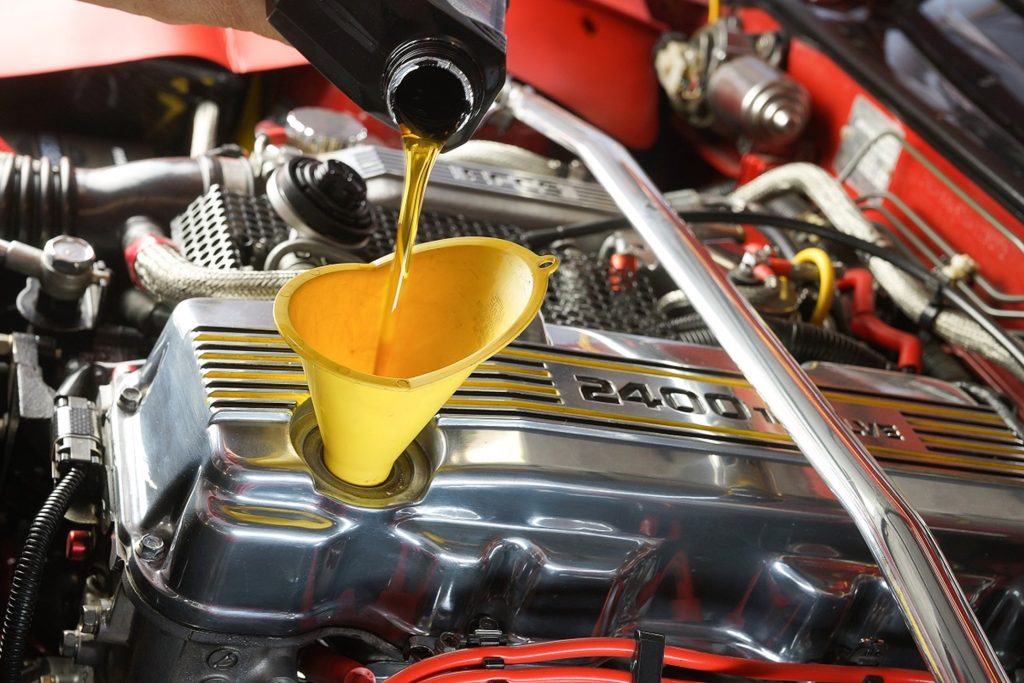
Motor oil is the lifeblood of your vehicle’s engine, and choosing the right motor oil grade is crucial for its health and longevity. When you visit an auto parts store or service station, you’ll find an array of motor oil options, each labeled with a combination of letters and numbers like 5W-30 or 10W-40. But what do these codes mean, and why do they matter? In this comprehensive guide, we will explain how to read motor oil grades and why they are essential for the performance and longevity of your engine.
Understanding Motor Oil Grades
Motor grades are represented by sets of numbers and letters. Here’s a breakdown of what those numbers and letters mean:
Read the rest of this entry »Does Your Chevrolet Need a New Car Battery?
One of the first signs that your car battery could be on the decline is a sluggish engine crank. When you turn the key, and your engine hesitates or takes longer to start, it’s an indication that your battery might not be providing the necessary power. A robust battery should power the engine with a swift and energetic crank.
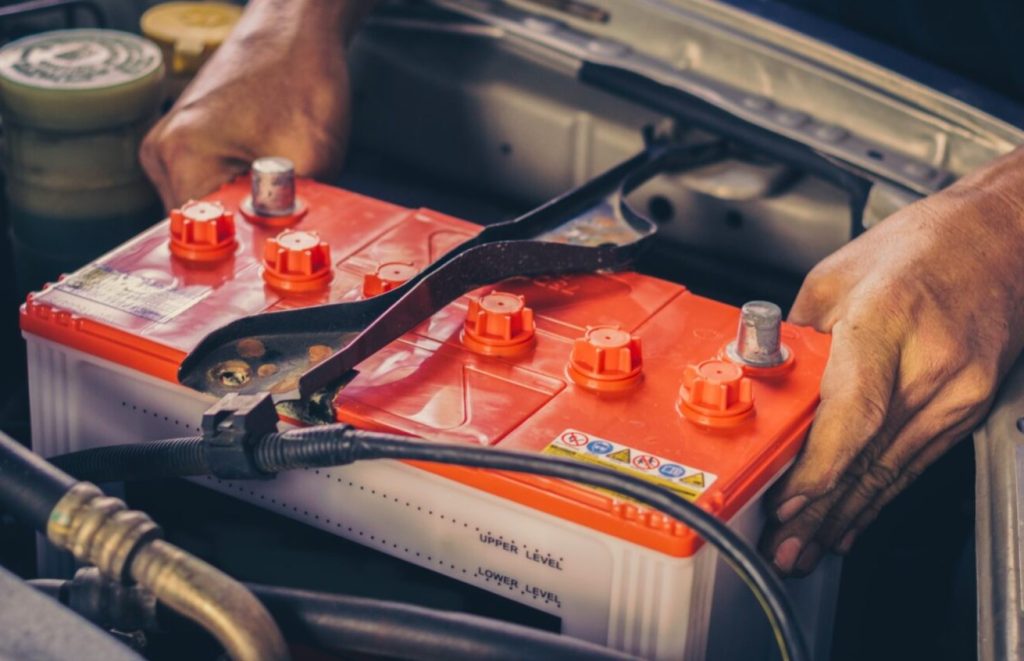
Dimming Headlights and Electrical Issues
Have you noticed your headlights dimming when you start your Chevrolet or while driving? Dimming lights can be a clear sign that your battery is struggling to maintain the required voltage. In addition to dimming headlights, you might also experience issues with your electrical components, such as power windows, the radio, or air conditioning. These electrical hiccups often point to battery trouble.
Read the rest of this entry »



